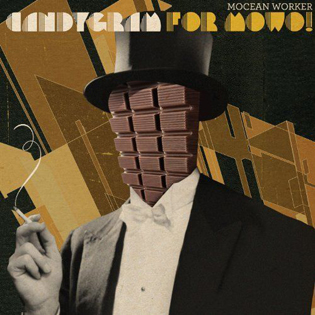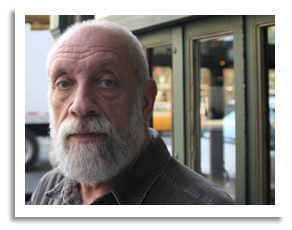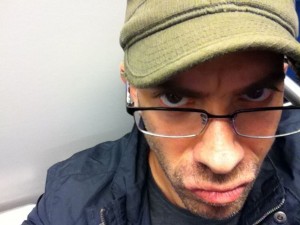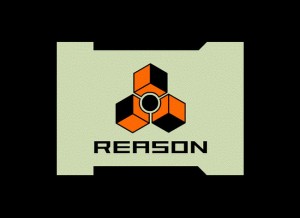Behind the Record: Mocean Worker’s “Candygram for Mowo!”
UPPER EAST SIDE/PHILADELPHIA/LOS ANGELES: Are you in the continuum? Moving musically through time? Next time you find yourself on a trip where vintage sounds and styles meld seamlessly with forward-thinking beats and production, you might just be with the MOWO.
Also known as Mocean Worker, also known as Adam Dorn, this is an artist too hyper to be defined, too diversified to sit still. MOWO first made a splash in 1998 as a Philly-to-Paris-to-NYC transplant with his imaginative drum & bass debut, Home Movies from the Brain Forest, which transfixed our ears with energetically beautiful revelations like “What’s Wrong”.
The evolution from there to Dorn’s latest release, Candygram for Mowo! (his sixth studio album), has been dramatic. Today, his sound identifies heavily with soul, circa 1930’s big band, jazz, ‘50’s hard bop, and yet even more styles, crystallizing in a charismatic collection that remains motivating after repeated listenings.
One source of MOWO’s rich internal collage is his bloodline, borne of the highly respected producer/A&R man Joel Dorn (Roberta Flack, Bette Midler, Leon Redbone, Don Mclean, The Neville Brothers). But another may be the multimedia explorer energy that drives him – his tracks are heavily licensed, and he successfully maintains a parallel path as TV/film composer. Connecting it all is a massive aptitude for audio software and a desire to merge it with the most organic of sounds in the studio.
Recently relocated to LA, Dorn let us in on the deep journey that was Candygram: From the devastating loss of his father, to a cross-country trek, and embracing the limitations of a Philadelphia studio’s ancient Pro Tools setup, this album’s story has it all.
You had some serious inspiration for Candygram for MoWo!, connected as it is to your father Joel Dorn. What is your personal journey and artistic statement with this record?
This album was started on a very sour note. Sadly — and very, very shortly after starting the writing for it — my father passed away. Many of you may know him as five-time GRAMMY-winning record producer Joel Dorn. I knew him simply as “dad.” I really checked out for a minute as his passing was incredibly disturbing and sudden. I knew I had to make another record and it had to be special.
The title for the album is a nod to Mel Brooks — I know that sounds insane. I just mentioned my father passing away, and yet the album is a cheeky wise-ass nod to Mel Brook’s movie Blazing Saddles — what gives? Well, my father and I shared a strong love and passion for all things comedy. While he was an editor of sorts throughout my entire writing career up to the point of his passing, he also was just my best friend. We would work on music together from time to time, but really he was just such a strong supporter of what I did and a cheerleader.
He never said “do this” or “do that,” he just gave me an incredible set of ears to play music for. This album represents the first time I didn’t get to use his filter as it were. It took me about 18 months to get back on track and get out of the pretty deep depression I had fallen into.
That’s a heavy backstory. How did all this emotion start to come out in the sound of the album?
I don’t normally write dark music — at least not since my debut albums which were actually darker, jazz-influenced Drum & Bass. I knew that this album was going to have to be a continuation of the last two MOWO! albums (2004’s Enter the Mowo! and 2007’s Cinco de Mowo!) and that means a few things.
1) fun, funky music with a nod to past eras 2) uplifting non-pretentious tunes that folks can listen to in many contexts — this is not electronic music strictly for a club setting, in fact, it really strives at being home listening and headphone-oriented music — 3) obey rules 1 and 2 HA!
Simply put I could not make a dark sad album. I just didn’t want to. I wanted to do something that celebrated my old man, was fun, and was an extension of my previous work. So, I took a little while, reflected and got myself to a good place. It’s really an album based on love for looking at the bright side of things. It’s a positive album top to bottom.
You moved out of Manhattan halfway into the production process. Was it difficult shifting gears, location-wise, in the middle of making a record?
I really didn’t have a hard time shifting gears at all. I had started to get on a roll and I just kept it going. I have to say the hardest part of keeping on a roll was that I had set up a new writing environment and I just could not get a handle on what the room sounded like.
The problem with most writing rooms, or at least all the rooms I’ve ever had, is that they pretty much sound terrible. I battle this by writing at low volumes and just trying to keep things simple. I try not to clutter the stereo field at all. This is really hard as I’m often mixing old samples with new beats and live instruments and, well, it’s nearly impossible not to run into some conflicts doing that.
Once I had a vague sense of what my room sounded like I just forged ahead. By the time I started mixing I knew what I was dealing with, and it was what it was. In a dream scenario I will eventually write and always record in a room where I know what I’m getting. I haven’t gotten there yet. Maybe someday I will?
You said you made some interesting observations about long-distance collaboration in the process. What were some of the advantages and disadvantages of that workflow that you discovered as the project went on?
Yeah, it was interesting going through an entire record where only one or two times did I find myself in the room with a musician playing on my stuff. It was surreal, as I’m really accustomed to being in the same room with someone overdubbing on my material, but I just didn’t have that luxury this time out.
The two musicians I happened to get to record with were Charlie Hunter (“Sho Nuff Now”) and Steven Bernstein ( “Shooby Shooby Do Yah! and “It Still Don’t Mean a Thing.”) I gotta be honest: I didn’t have much to say to them when I was in the room with them anyway. I knew why I had hired them, and I got EXACTLY what I wanted to get out of them and I got it. Those two sessions just ended up being incredible hangs where there was no need for notes. I have learned — and this album cemented this concept for me — that you know who you are hiring and what to expect, and 99% of the time you get what you need without much communication. It’s that situation where if you don’t know what you want, and you hire somebody you may run into a problem.
Nobody on this album was hired because I was just poking in the dark with a stick. Everyone on the album was a friend or someone I had worked with numerous times before, or lastly someone I had always wanted on a tune and knew their thing. An example of this is John Ellis’s solo on “Say Yeah Yeah”: I love his playing, have been wanting him for years to play on something but I just didn’t have the right song. This came up and he just nailed it. Bill Frisell is also an old friend and someone I’ve worked with on film scores, his records and my own recordings (ENTER THE MOWO!) so that was also a no-brainer. Seriously, once I had the tracks laid out it was so easy to just pick and choose who I wanted where. The table was set nicely. I can’t say enough about how everyone gave their time and creative energy to this record — just a really huge record for me.
I do have one posthumous collaboration, and that’s with (jazz multi-instrumentalist) Rahsaan Roland Kirk. This is a collab that’s happened on my last three records, and I have some Rah sitting around that my dad had recorded and I love working him into my tunes. He was my father’s favorite artist, and I really love having him in this context — I know my father loved hearing Rah this way, so I had to bring him back on a tune as a nod to my old man.
When I last interviewed you, you were really getting inspired by Reason. Is this still your main creative tool? How has your use of the program evolved along with updates?
OK, this is a very complicated question for me to answer. Sort of.
I have always and will always use Propellerheads software products to write. It’s ingrained in my soul. A little while into writing the album the props released Record and I fell in love instantly with its mindlessly simple interface. I love the software, but I can’t say that I really changed a ton in terms of how I use the products.
The MAIN way I changed everything is the use of the mixing console built into Record. It’s an incredible writing tool. I love the fact that I instantly had the ability to really EQ and write at the same time. The mixing desk, modeled after an SSL mixing console, really made me feel musical. Other sequencers offer you the ability to build a desk suited to your needs by adding plugins and building the signal path. Meanwhile, Record has a desk, its sounds amazing and it has that incredible master bus compressor just sitting there begging you to engage it. It’s just such a simple yet musical piece of software.
As of this moment Reason 6.0 is coming out and now Record is bundled into Reason. So I will see with the new devices how things change. I’m already LOVING the Alligator device like you cannot believe. I am a HUGE fan of the Rex file. It enables me to play samples and make music from records mine. I always find inspiration from it.
What are some cool Reason tips and tricks you can share – what’s a song or songs on “Candygram” where we can hear this in action?
I would say check out the tune “Out there In The Random” from the new album. There are some insanely tweaked-out samples in there – really, really odd things all put together and they make this weird electro lullaby odd little track. Its all Reason top-to-bottom, was mixed in Record, actually, and then touched in Pro Tools a bit.
It’s a vibe not often associated with my sound. I’m proud of it because it sounds simple, but its construction is not simple at all: It’s a bevy of sounds delayed to death and tuned to be in sympathetic keys. It’s a very sing-songy sounding thing with an ‘80’s bent but its based all on totally unrelated samples and the synths built into Reason. It’s a rare example of my actually using the synths in Reason which I do not do very often.
As it was coming together I kind of hated it and loved it at the same time. It’s a strange puzzle but it’s MY strange puzzle. Lots and lots of filtering, reverb and delay went into it. No real trick, just a lot of experimenting.
Why did you find yourself tracking/mixing on a really old version of Pro Tools in Philly? How did the limitations of that platform eventually benefit the final result?
Well, I was introduced to this amazing and insane character named Paul Atkinson, a Brit living in Philadelphia near my house at the time. A close friend named Clay Sears, who plays guitar with Janet Jackson, suggested I check him out. I went into his studio — a complex in the basement of an industrial building in a working class neighborhood. I was not sold at first, and he pushed me for the gig saying, “Just give me a tune and we can take it from there.”
I have a weakness for Brits. I think they are much better at sound than we are. My favorite records are mostly made in Britain, and I find far more influential movements in electronic music coming from there. So, he had at a tune and he kind of nailed it. Over the course of the next five weeks we tweaked and messed with every song multiple times and got things just sitting in such a nice tight funky way.
This was not material he was accustomed to dealing with and I wasn’t used to working in Pro Tools 5.1…..oh did I mention that? We were mixing in the box on an old Mac running OS 9. What was I thinking? It really freaked me out at first, since I hadn’t messed with OS 9 since the year 2002, I think. It felt so ancient but he just got great sound and I slowly over the course of a couple of weeks just trusted him to nail it down. He did! I think he did an amazing job.
That little piece of software time travel is fitting for Candygram, we think! Now, along with the album, you’re scoring for “Weight of the Nation” on HBO. Why is scoring a natural extension of what you do?
I mostly write instrumental music. I’ve always been told my music lends itself to picture. Over the years I have really been blessed to have many of my tunes licensed for films, TV show and commercials — NEVER with the intention of them showing up there. I guess I just write a certain style and it works.
I really have never had a design on it but Id be lying if I said at this point I didn’t expect some licensing here and there. The track record has been incredible with spots for Ford, Kia, Hyundai, Kraft, Marriott, Crayola, Honda, Miller Genuine Draft and Chicos to name a few. I just love that something about my music continues to resonate with music lovers, film makers, advertisers and hipsters and absolute non-hipsters. Just in general, I make my living having music end up in things, having it licensed. I don’t tour, I don’t show up on talk shows. My living and my artistry is funded by all of these things so I sincerely hope it continues.
The “Weight of the Nation Project” is a documentary series about the problems with eating disorders, and food in general in the United States. It’s a four-part series being produced in conjunction with the US Government, so it’s a huge honor to write music and lend music to that cause.
My goal in the next portion of my career is to do more scoring. I have been insanely lucky enough to score films along side Brian Eno, John Cale, Hal Willner and peripherally Danny Elfman — a Disney film called Meet the Robinsons where I scored a nice scene and Master Elfman, one of my heroes, did the rest of the amazing score. I just think that’s the direction things are headed in. Folks know me as MOWO! for sure, but I’ve also scored about five films and documentaries and have had my Mocean Worker music in about 25-30 feature films. I’d love to get the chance to continue doing this alongside my MOWO! career.
That’s a music-for-picture track record that just about any artist would want to achieve, no question. Back on the tech tip for a second: You’ve said you recently started incorporating Logic into your workflow. How has changing DAWs been helpful to you, and in what ways is it a difficult transition?
Man, Logic is a mixed bag. I love it for its stability while running many AU plug ins. I’m using Logic an enormous amount for the HBO ““Weight of the Nation” project. Inside of Logic I’m using Native Instruments’ Komplete Ultimate 8, and the full compliment of Spectrasonics plugs with an emphasis on Omnishpere and Trillian.
I’m also, as always, using Reason 6 for some tunes where a little something different is needed. I’m sure I could just easily run Reason inside of Logic but it’s just a pain in the ass. Id rather just get what I need out of Reason and print stems for importing. I’m lazy. If someone has a nice tutorial for me to watch , please….send it along!
Pro Tools is factoring in less and less. I just ran out of patience. The lack of stability with soft synths just wore thin on me. I have Pro Tools 9 and according to many producer and composer friends it’s far more stable now. I just kind of use it for mixing now when I need to and some other kinds of editing. I don’t feel quite comfortable enough yet in Logic yet to do MOWO! material, but I’m sure as time goes on I will find it to be second nature to do some stuff.
So there you have it. I use three DAWS. I know that sounds insane. It’s just each program offers a specific thing I love.
You’ve just moved to L.A. What are you seeing are the advantages/disadvantages of being based out of there as a musician/engineer/producer, as compared to NYC?
The weather. That’s the only advantage thus far. All of my work is still based in NYC and back on the East Coast. I’ve only been here about 10 weeks at this point, so I would check back in in a couple of years and I think that that will be a different story.
I’m finding things to be different out here so far. Everything is great, but I’m seeing some advantages to the brutal honesty of NYC. They both have upsides and downsides. I love both places but my heart is in NYC, not gonna lie about that. I did 25 years there and will come back as often as I can. That energy only exists in a few places on earth — London, Berlin, Tokyo as well — and I need to feed off it from time to time.
You’ve said that Candygram will “complete a thought” for you musically. Can you explain what you mean by that?
I’ve made three albums under the “MOWO!” moniker, or rather with the word MOWO! in the title. Its sort of a character MOCEAN WORKER turned into. These last three albums I can say without a doubt or reservation I have really feel like I’ve invented something that I can call my own.
Candygram for Mowo! is the last in this installment, I think. I think I said what I wanted to say with the old jazzy thing. I want to start exploring other things a little. Having said that I might find that, “HEY……this is what I do” and can continue to explore this sound. But I remember starting off making drum and bass music, and then taking a really insane hard turn into house/breaks which turned into what I’m doing now.
Enter the Mowo! was delivered to my former record label and handed back to me as a failure. It was discarded as a mistake and the end of my career. I knew that wasn’t the case, self-released it, and haven’t looked back now over the last three albums. It’s been insanely difficult and a make-it-up-as-I-go process. I was DIY when it was SO not cool to go your own way — now everyone is joining me because the business is falling apart.
However, I don’t think it’s falling apart. I think it’s settling in and back to a thing that sort of existed in the ‘50’s: I know that might sound weird, but its kind of a Wild Wild West again, and I think I’m gonna be OK. I think planning success is important, but some things have to also happen on their own and find their cracks and crevices.
So, I say it completes a thought on these types of titles because I might not have a ton more to say. Meanwhile, shit, I just took four years to make an album after losing my father and going through such tremendous change. Moving out of NYC, meeting a wife and becoming a step dad. I think the MOWO! train is still chugging along – it’s going to change, morph and become new and exciting things.
— David Weiss
Candygram for Mowo! is available digitally and physically now.
Please note: When you buy products through links on this page, we may earn an affiliate commission.










